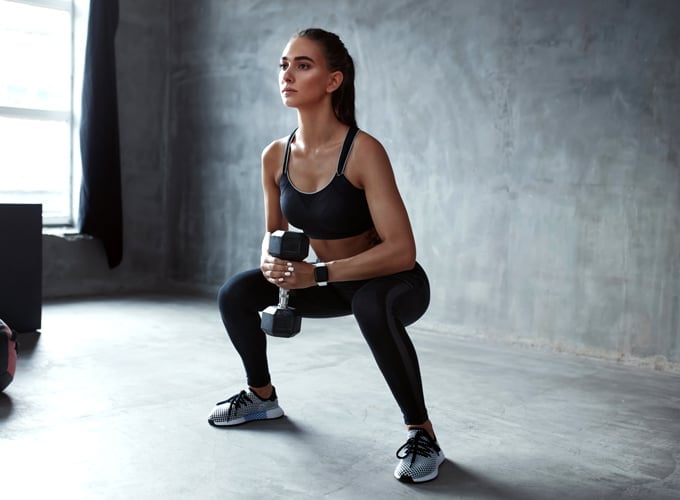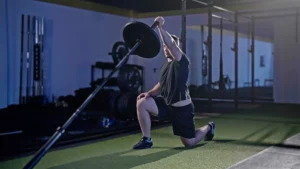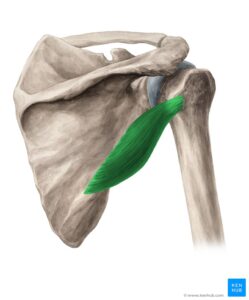Introduction
For all of you leg day enthusiasts, it’s time to review the hidden weapon of thunder thighs everywhere: Dumbbell Goblet Squats. Let’s take a look, shall we?
Dumbbell Goblet Squats are a fantastic exercise to incorporate into your fitness routine. They offer numerous benefits, including building lower body strength, improving flexibility, and enhancing core stability. In this guide, we’ll delve into everything you need to know about dumbbell goblet squats, from their benefits and proper form to common mistakes and variations.
What are Dumbbell Goblet Squats?

Dumbbell goblet squats are a type of squat where you hold a dumbbell vertically in front of your chest, resembling the position of holding a goblet. This exercise targets the quads, glutes, hamstrings, and core, making it a great compound movement for overall lower body strength. Unlike traditional barbell squats, goblet squats place less strain on the lower back and can be easier to learn for beginners.
Benefits of Dumbbell Goblet Squats
- Enhanced Lower Body Strength: Goblet squats primarily target the quadriceps, hamstrings, and glutes, helping to build strength and muscle in these areas. The front-loaded position of the dumbbell also engages the core muscles, providing a full-body workout.
- Improved Core Stability: Holding the dumbbell in front of your chest engages your core, improving stability and strength in your abdominal muscles. This can help enhance overall balance and posture, which is beneficial in other lifts and everyday activities.
- Better Flexibility and Mobility: The goblet squat position encourages a deeper squat, promoting flexibility and mobility in the hips and ankles. This improved range of motion can help with other exercises and reduce the risk of injury.
- Reduced Risk of Injury: Goblet squats are easier on the lower back compared to back squats, making them a safer option for those with back issues. The front-loaded position also promotes a more upright torso, reducing the strain on the spine.
- Versatility: This exercise can be modified to suit different fitness levels, making it suitable for beginners and advanced lifters alike. Whether you’re looking to build strength, enhance conditioning, or improve mobility, goblet squats can be tailored to your needs.
How to Perform Dumbbell Goblet Squats
Step-by-Step Guide:
- Starting Position: Stand with your feet shoulder-width apart, toes slightly pointed out. Hold a dumbbell vertically by one end, close to your chest, with both hands. Your elbows should be pointing downward and close to your ribcage.
- Engage Your Core: Tighten your core muscles to maintain a stable and upright torso throughout the movement. This will help protect your spine and ensure proper form.
- Squat Down: Begin the squat by pushing your hips back and bending your knees. Keep your chest up and back straight as you lower yourself into a squat position. Aim to get your thighs parallel to the ground or lower if possible. Your knees should track over your toes and not cave inward.
- Drive Up: Push through your heels to return to the starting position, fully extending your hips and knees. Squeeze your glutes at the top of the movement for maximum activation.
- Repeat: Perform the desired number of repetitions, maintaining proper form throughout. It’s important to move in a controlled manner, focusing on both the descent and ascent.
Pro Tips:
- Keep your elbows pointed down and close to your body to help stabilize the dumbbell.
- Ensure your knees track over your toes and don’t cave inward.
- Breathe in as you lower into the squat and exhale as you push back up.
- Keep your weight balanced over your mid-foot to heels, avoiding leaning too far forward or backward.
Common Mistakes to Avoid

- Rounded Back: Ensure your back remains straight and avoid rounding your shoulders to prevent lower back strain. Engaging your core and maintaining an upright torso can help with this.
- Knees Caving In: Focus on keeping your knees aligned with your toes to avoid placing unnecessary stress on your knees. Using a resistance band around your thighs can help train proper knee tracking.
- Shallow Squats: Aim for a full range of motion by lowering your hips until your thighs are at least parallel to the ground. Deeper squats can help improve flexibility and muscle activation.
- Incorrect Dumbbell Position: Keep the dumbbell close to your chest to maintain balance and proper form. Holding it too far away can cause you to lean forward and lose stability.
Variations of Dumbbell Goblet Squats
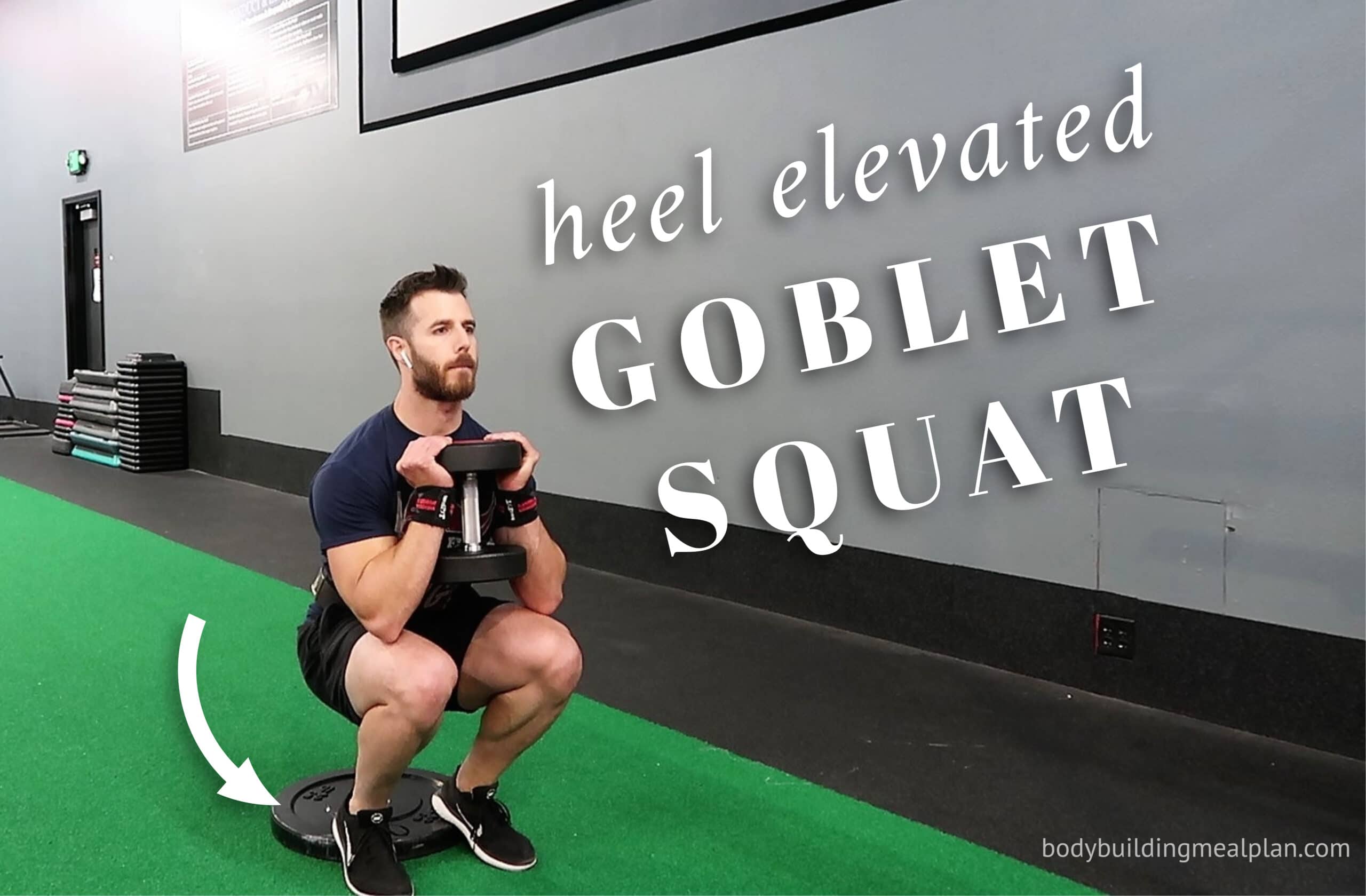
- Goblet Squat to Press: Perform a goblet squat and add an overhead press at the top of the movement for a full-body workout. This variation engages the shoulders and triceps in addition to the lower body and core.
- Goblet Squat with Heel Lift: Elevate your heels on a small platform or weight plate to emphasize the quads and improve squat depth. This variation can help those with limited ankle mobility achieve a deeper squat.
- Single Arm Goblet Squat: Hold the dumbbell with one hand for an added challenge to your core stability and grip strength. This variation requires greater balance and can help identify and address any asymmetries in strength.
- Goblet Squat with Pulse: Add a small pulse at the bottom of the squat to increase time under tension and intensity. This variation can enhance muscle endurance and provide a greater burn.
- Goblet Squat to Lateral Lunge: Combine a goblet squat with a lateral lunge for a dynamic lower body workout. This variation targets the inner and outer thighs and improves lateral movement.
Advanced Techniques for Dumbbell Goblet Squats

For those looking to take their goblet squat to the next level, consider using the following advanced techniques:
- Tempo Goblet Squats: Slow down the tempo of your squats, taking 3-5 seconds to lower down and another 3-5 seconds to rise back up. This increases time under tension and enhances muscle growth.
- Pause Goblet Squats: Pause at the bottom of the squat for 2-3 seconds before driving back up. This helps build strength and stability in the lower body.
- Goblet Squat Complexes: Combine goblet squats with other exercises like kettlebell swings or lunges in a circuit format for a high-intensity workout.
Incorporating Dumbbell Goblet Squats into Your Routine

To maximize the benefits of dumbbell goblet squats, consider incorporating them into your workout routine 2-3 times per week. They can be performed as part of a lower body workout, full-body routine, or as a warm-up exercise.
Sample Workout:
- Warm-up: 5-10 minutes of light cardio and dynamic stretches.
- Dumbbell Goblet Squats: 3 sets of 12-15 reps
- Lunges: 3 sets of 10-12 reps per leg
- Romanian Deadlifts: 3 sets of 10-12 reps
- Leg Press: 3 sets of 12-15 reps
- Cool-down: 5-10 minutes of stretching and foam rolling
Frequently Asked Questions (FAQs)
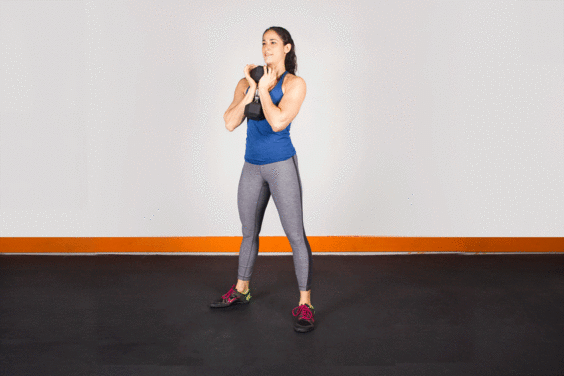
Q: Can beginners perform dumbbell goblet squats? A: Absolutely! Dumbbell goblet squats are a great exercise for beginners due to their simplicity and effectiveness. Start with a lighter weight and focus on mastering the form before progressing to heavier dumbbells.
Q: How heavy should the dumbbell be for goblet squats? A: The weight of the dumbbell will depend on your fitness level and goals. Beginners might start with a 10-20 lb dumbbell, while more advanced lifters can use 40-60 lb or more. Ensure the weight allows you to maintain proper form throughout the exercise.
Q: How many sets and reps should I do? A: For general strength and muscle growth, aim for 3-4 sets of 8-12 reps. If you’re focusing on endurance, you can perform higher reps, such as 12-15 per set.
Q: Can goblet squats replace back squats? A: While goblet squats are a great exercise, they target the muscles differently than back squats. Both exercises have their place in a well-rounded training program. Goblet squats can be a good alternative for those who experience discomfort with back squats.
Q: Are goblet squats good for weight loss? A: Yes, goblet squats can be an effective part of a weight loss program. They help build muscle, which increases your metabolism, and can be included in high-intensity interval training (HIIT) workouts for added calorie burn.
User Testimonials
John D., 35: “I started incorporating dumbbell goblet squats into my routine a few months ago, and the results have been fantastic. My leg strength and flexibility have improved significantly, and I feel more stable during other lifts.”
Sarah L., 28: “As a beginner, I found goblet squats to be a great way to learn proper squat form without putting too much strain on my back. They’ve become a staple in my workouts, and I love the versatility they offer.”
Mike T., 42: “I’ve been lifting for years, and goblet squats are still one of my go-to exercises. They’re great for a quick, effective lower body workout and are easy to modify for added challenge.”
Conclusion
Dumbbell goblet squats are a versatile and effective exercise that can help you build strength, improve flexibility, and enhance overall fitness. By incorporating them into your routine and following the tips and techniques outlined in this guide, you’ll be well on your way to mastering this powerful movement. Whether you’re a beginner or an advanced lifter, dumbbell goblet squats are a valuable addition to any workout regimen. Keep experimenting with variations and advanced techniques to continue challenging yourself and making progress.
By following this comprehensive guide, you’ll not only master the form and technique of dumbbell goblet squats but also understand their importance and versatility in a well-rounded fitness routine. If you’re looking for some more squat variations to add to your routine, check out our Zercher Squat vs. Front Squat article, where we look at the differences between these two popular squat variations. Happy squatting!

